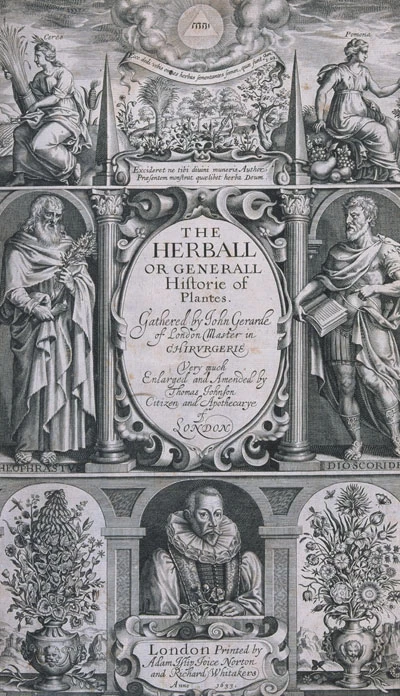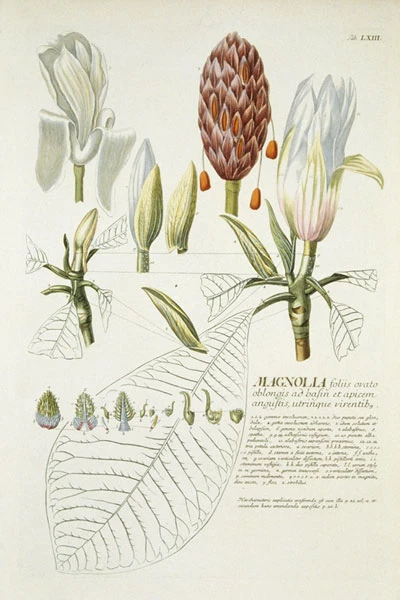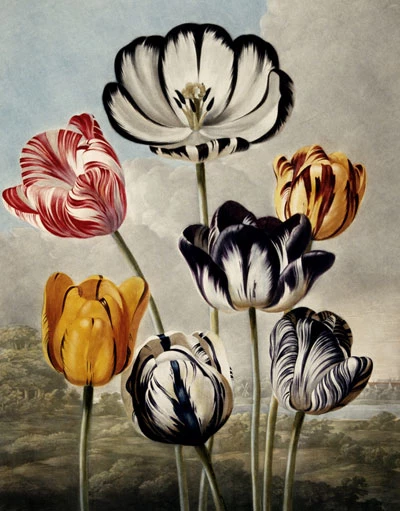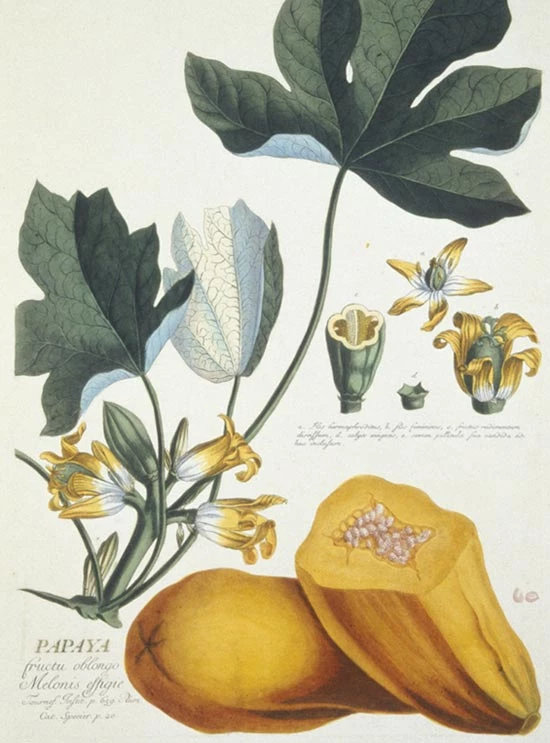Drawn from nature: Botanical illustrations
Throughout the Dark Ages, disease and poor hygiene were rife and people relied on herbalists and their remedies. Cure for deafness: take rat's urine, the oil of eels, the house leek, the juice of travellers' joy and a boiled egg.
Plant collectors travelled to remote parts of the world. Finding new plants meant exploring new lands - often without accurate maps, through country without roads, and with few settlements.
In the 17th century, travel and trade brought many new exotic plants to Europe. So-called 'Tulipomania' rose from the passionate desire of the wealthy to own the rarest plants. In Holland, a single tulip bulb was bought for 4,600 florins, plus a coach and a pair of dappled greys.
Many of the exotic fruits such as the Paw-paw and Pineapple discovered on the voyages of discovery quickly became fashionable in Europe. The Paw-paw (papaya) is a native of tropical America.
Mankind has always been fascinated by flowers, by their beauty, and by their possibilities for healing and knowledge. Amgueddfa Cymru holds a unique collection of more than 9,000 botanical illustrations spanning five centuries.
After a small exhibition at National Museum, Cardiff in 1942, the illustrations were put into store. Fifty years later the breadth and significance of the collection was rediscovered and their exquisite draughtsmanship fully appreciated.
The collection comprises work ranging from professional engravings to amateur watercolours, and includes several items by acknowledged masters such as Georg Dionysius Ehret and Pierre Joseph Redouté.
500 years of botanical illustrations
The collection traces the development of botanical illustration and its relationship between art and science from the medieval herbals of the Dark Ages, when man feared nature, through the Enlightenment and the great voyages of discovery to the contemporary illustrations of the 21st century.
Floras
By 1600, after the early woodblocked herbals, the process of engraving on metal allowed a finer delineation of every minute detail, revolutionising botanical illustration. Flora Londinensis (1777-87) by William Curtis is one of the most famous British floras listing all the plants within a ten-mile radius of London. An important early 19th century European flora is the Flora Danica (1763-1885), which took almost a hundred years to complete.
In the 17th century, plants were grown for their beauty as well as practical and scientific use. The wealthy produced 'florilegias' illustrating the rare and beautiful plants on their estates, while scientific guides were full of precise illustrations from a whole range of plants.
The collection contains many original prints from the 17th century, including work by Redoute, Sowerby, Fitch and the Welsh-born Sydenham Edwards.
The introduction of taxonomy
In 1753 the Swedish naturalist Carl Linnaeus developed a new system of naming and classifying all living things. Everything was given two names in Latin: a genus name and a species name. This had a profound impact on the style of botanical illustration. Emphasis was now on the plant's sexual organs — much to the alarm of polite society.
The acceptance of the new Linnaean system was helped, in part, by the high quality of illustrations produced by G. D. Ehret at that time. The Museum holds illustrations by Ehret from Plantae Selectae (1750-73) and also a collection by J. S. Miller from Bute's Botanical Tables (1785), commissioned by John Stuart, 3rd Earl of Bute.
The collection also includes works by Redouté, Kirchner and Elizabeth Blackwell. Backwell illustrated a herbal entitled A Curious Herbal to free her husband from incarceration in a debtor's prison.
Voyages of discovery
Botanists accompanying the epic voyages of discovery in the 18th and 19th centuries were the first to record and collect the exotic plants encountered in the remote uncharted lands. For the first time Europeans saw pictures of exotic fruits such as pineapples, paw-paws and pomegranates. Examples in the collections include Banks' Florilegium and works from Curtis's Botanical Magazine.
Victorian enthusiasm
The Victorians brought about an immense enthusiasm for science. Engravings of newly introduced plants became widely available through journals and popular magazines, such as Carter's Floral Illustrations and Paxton's Floral Garden.
With the discovery of Victoria regia, the giant water lily from the Amazon, there was much rivalry between the gardeners of the stately houses of England as to who would be first to induce it to flower in Britain. Joseph Paxton, the gardener at Chatsworth, won the race. It is said that the structure of the huge leaf inspired his design for the Crystal Palace.




Comments - (1)